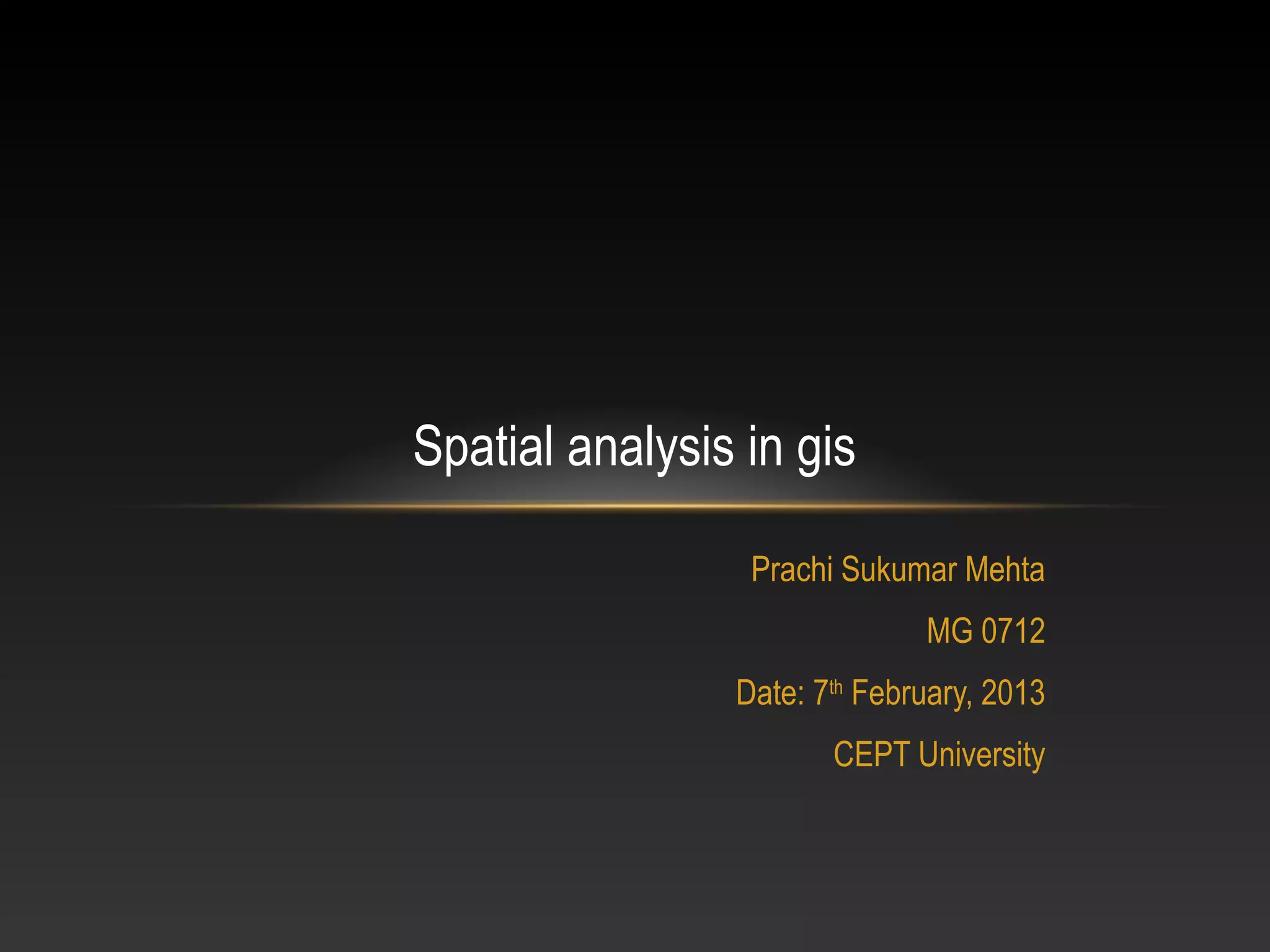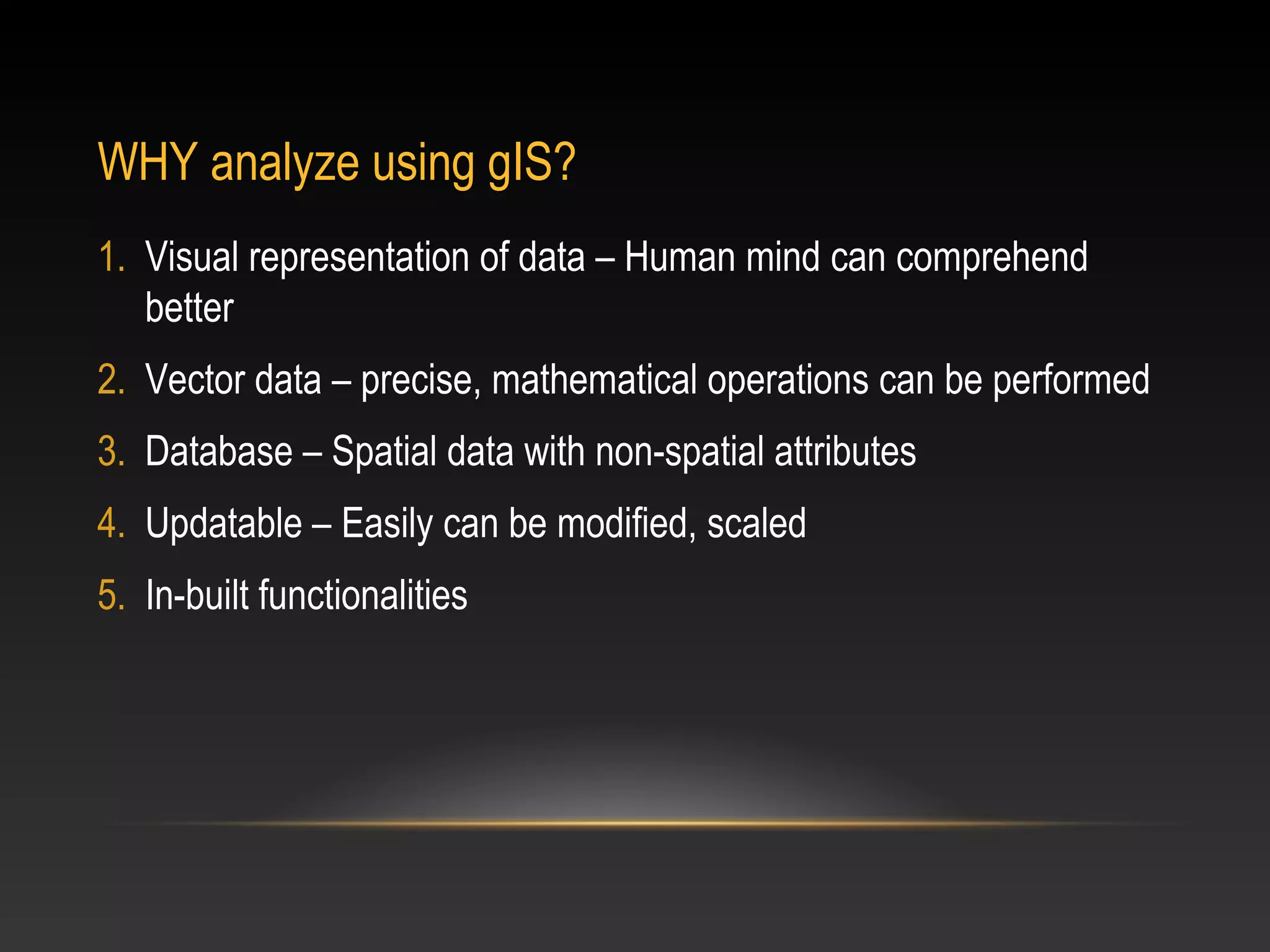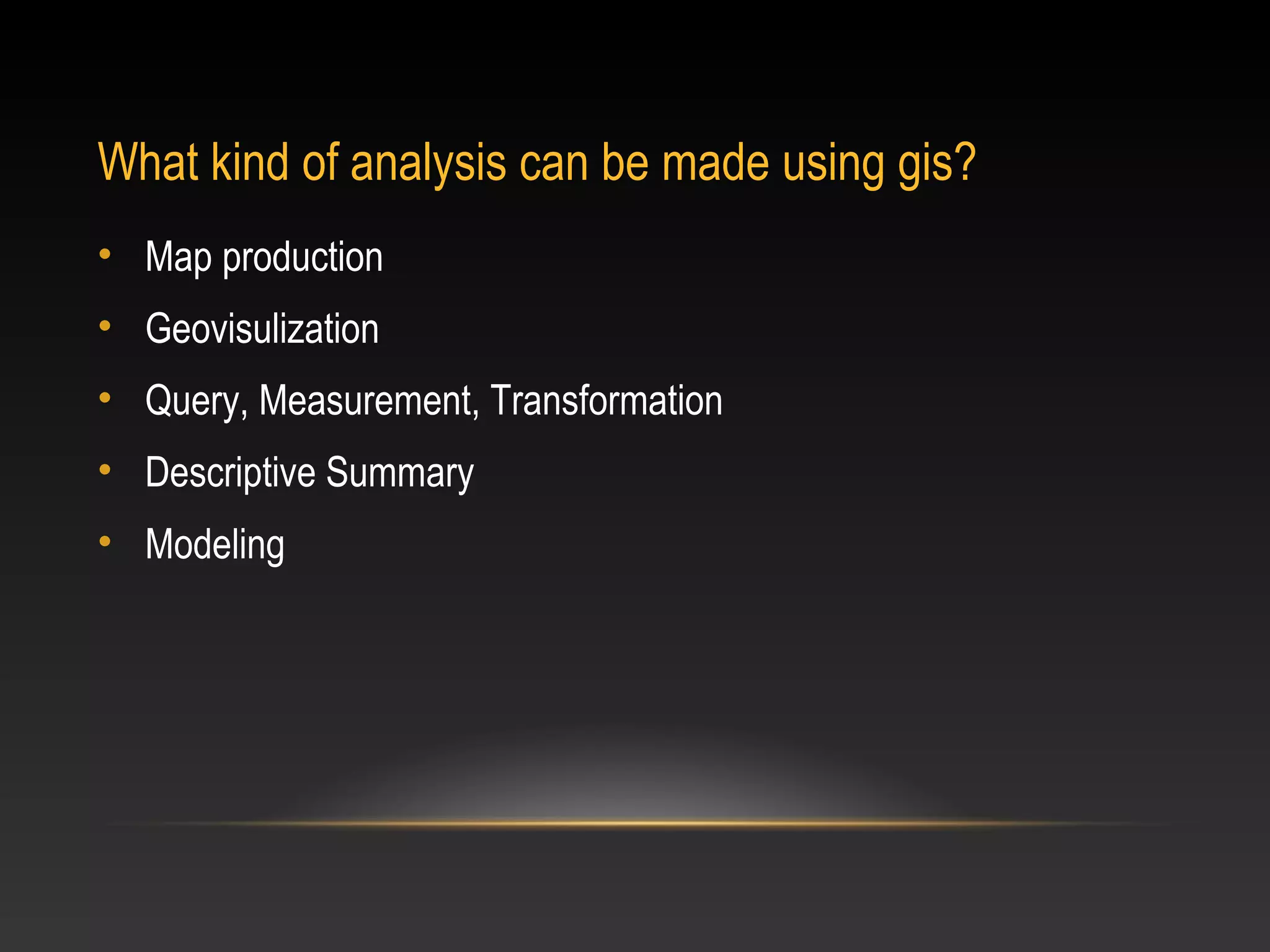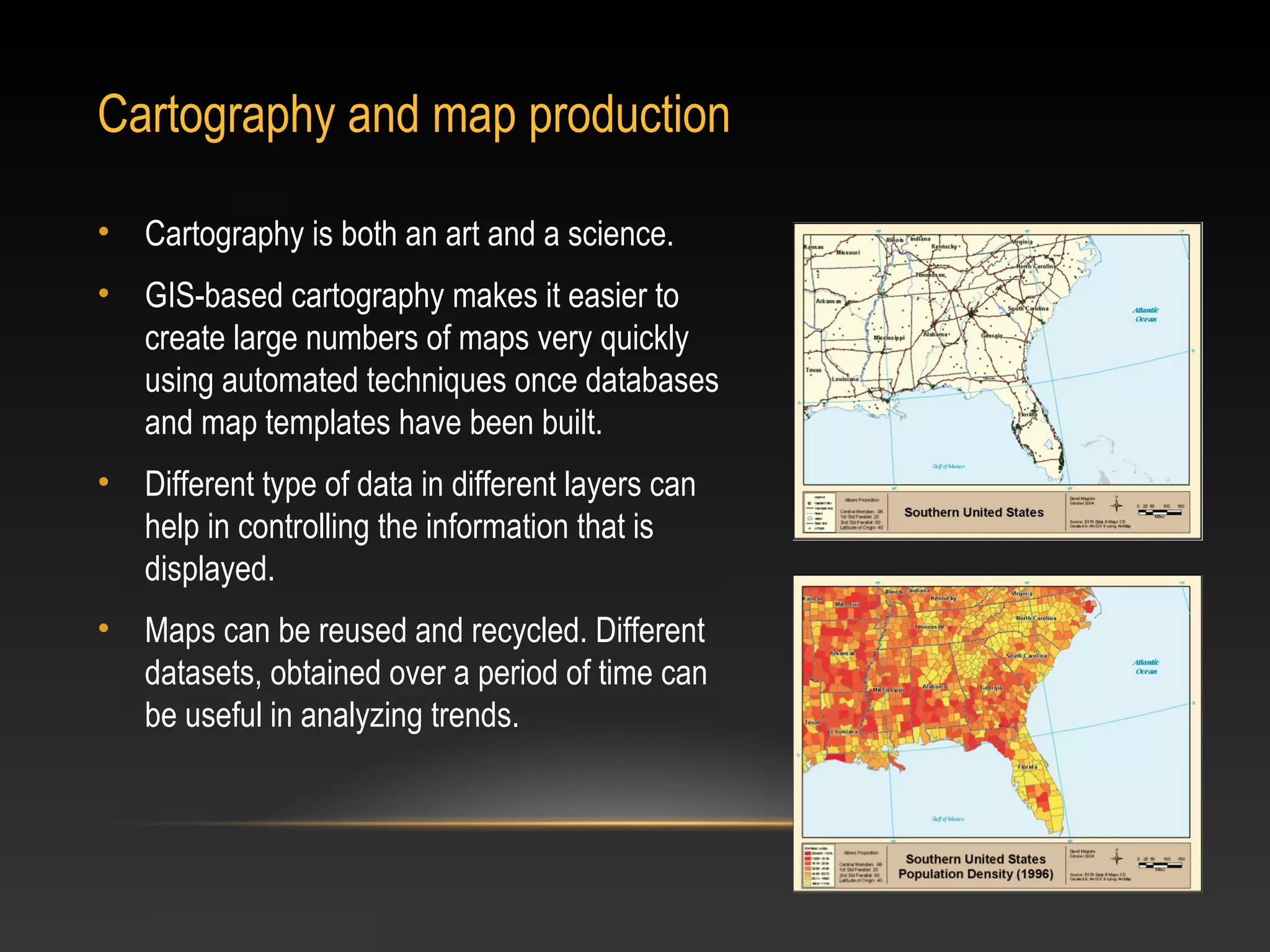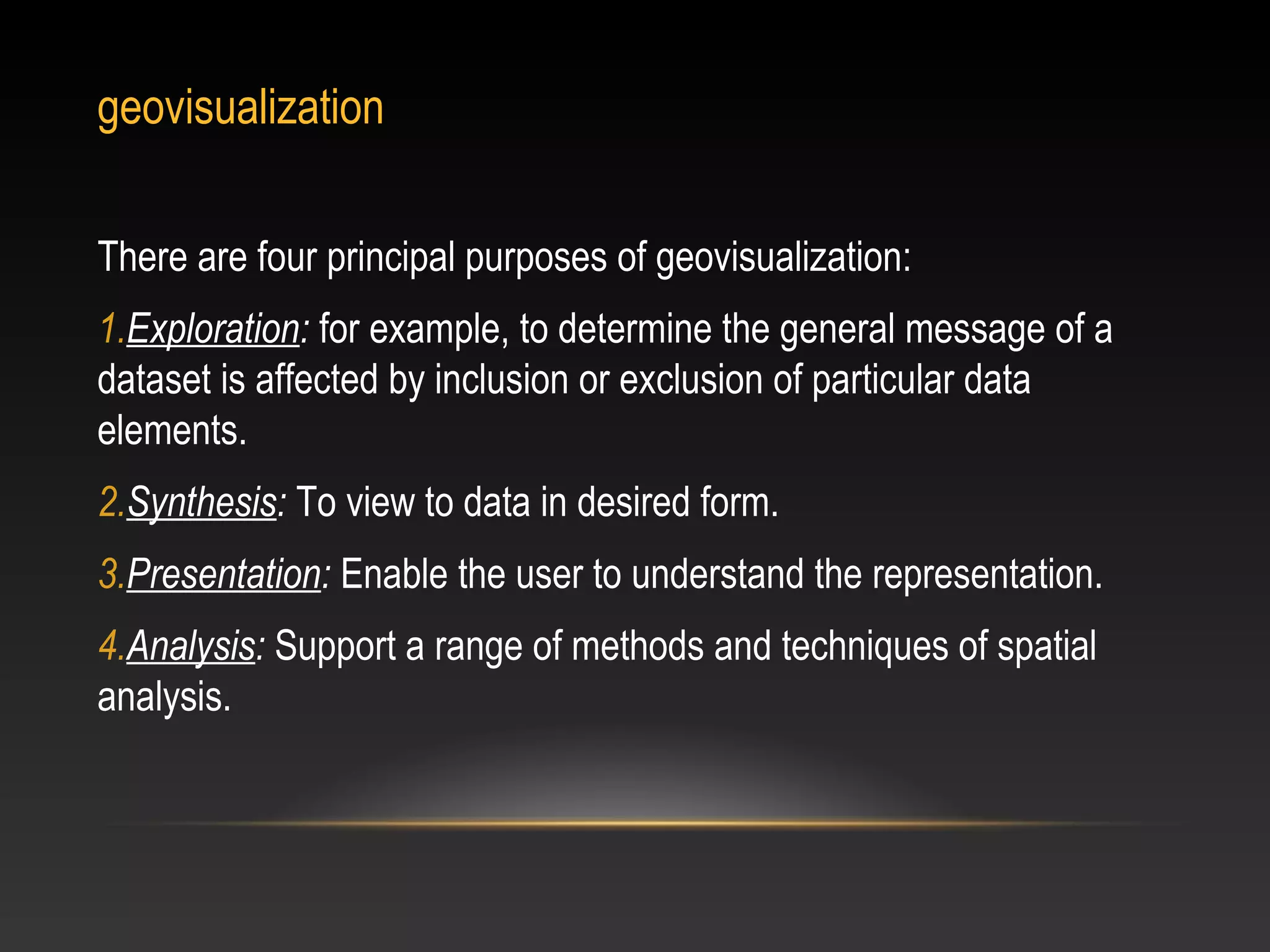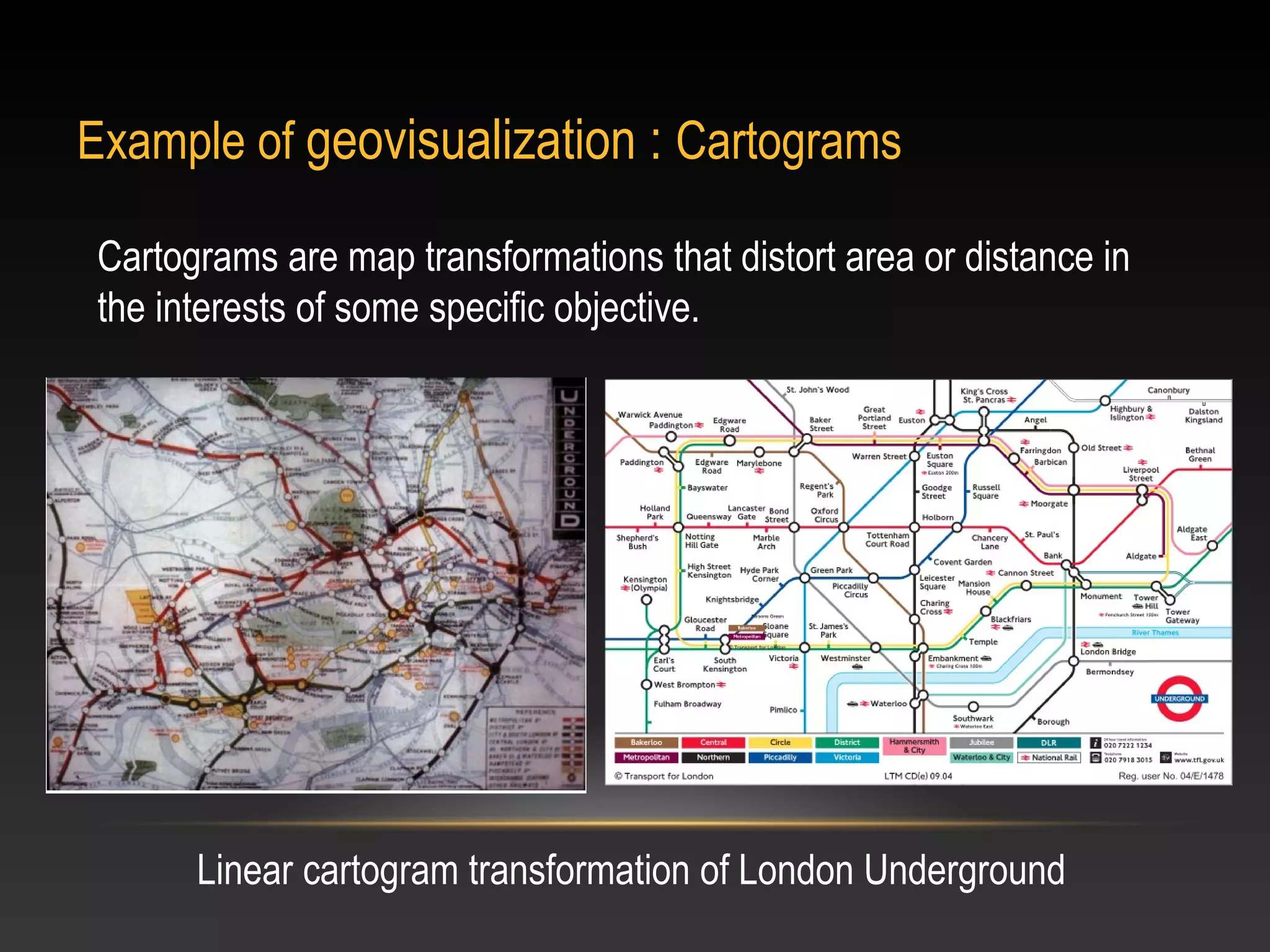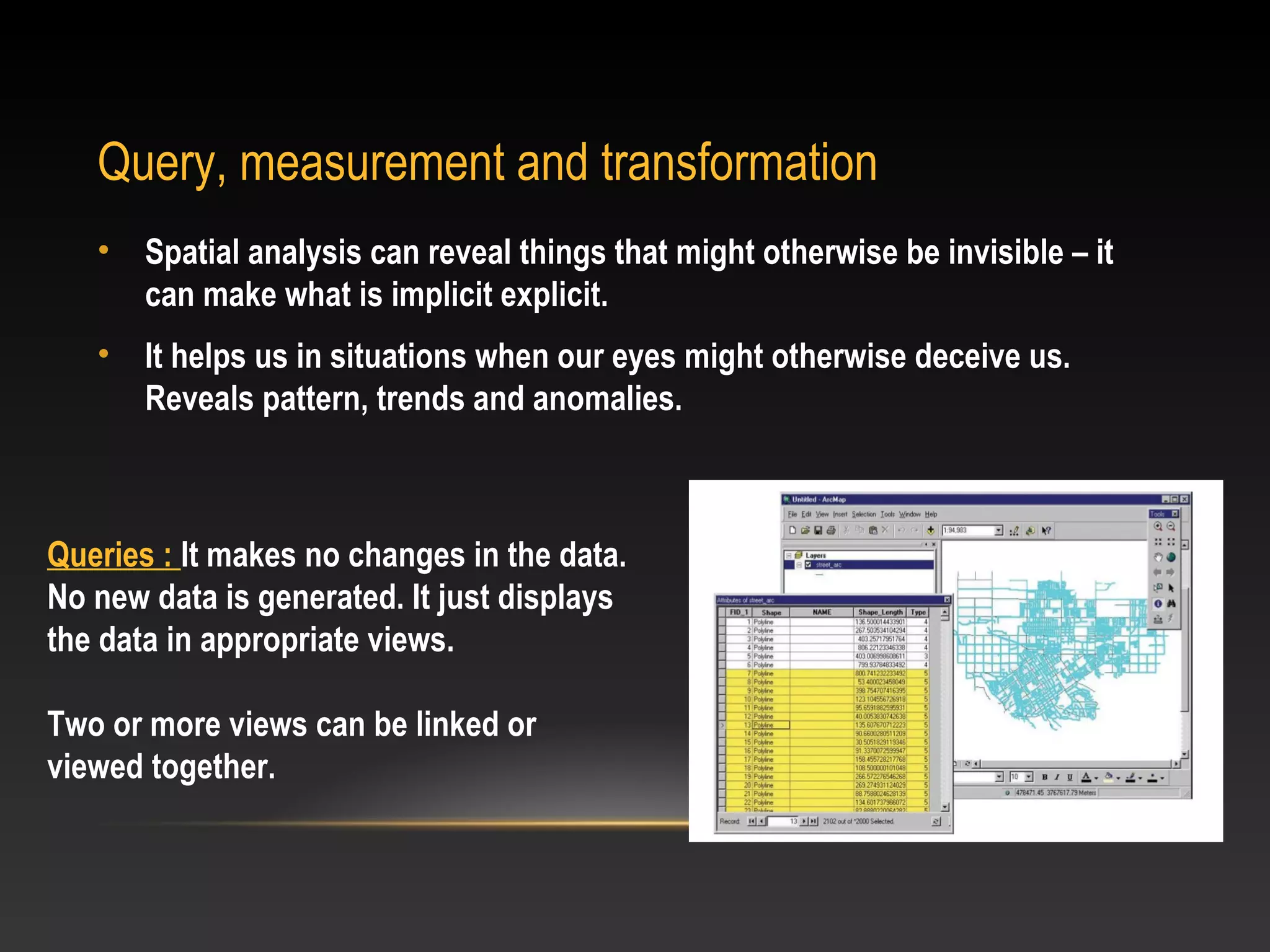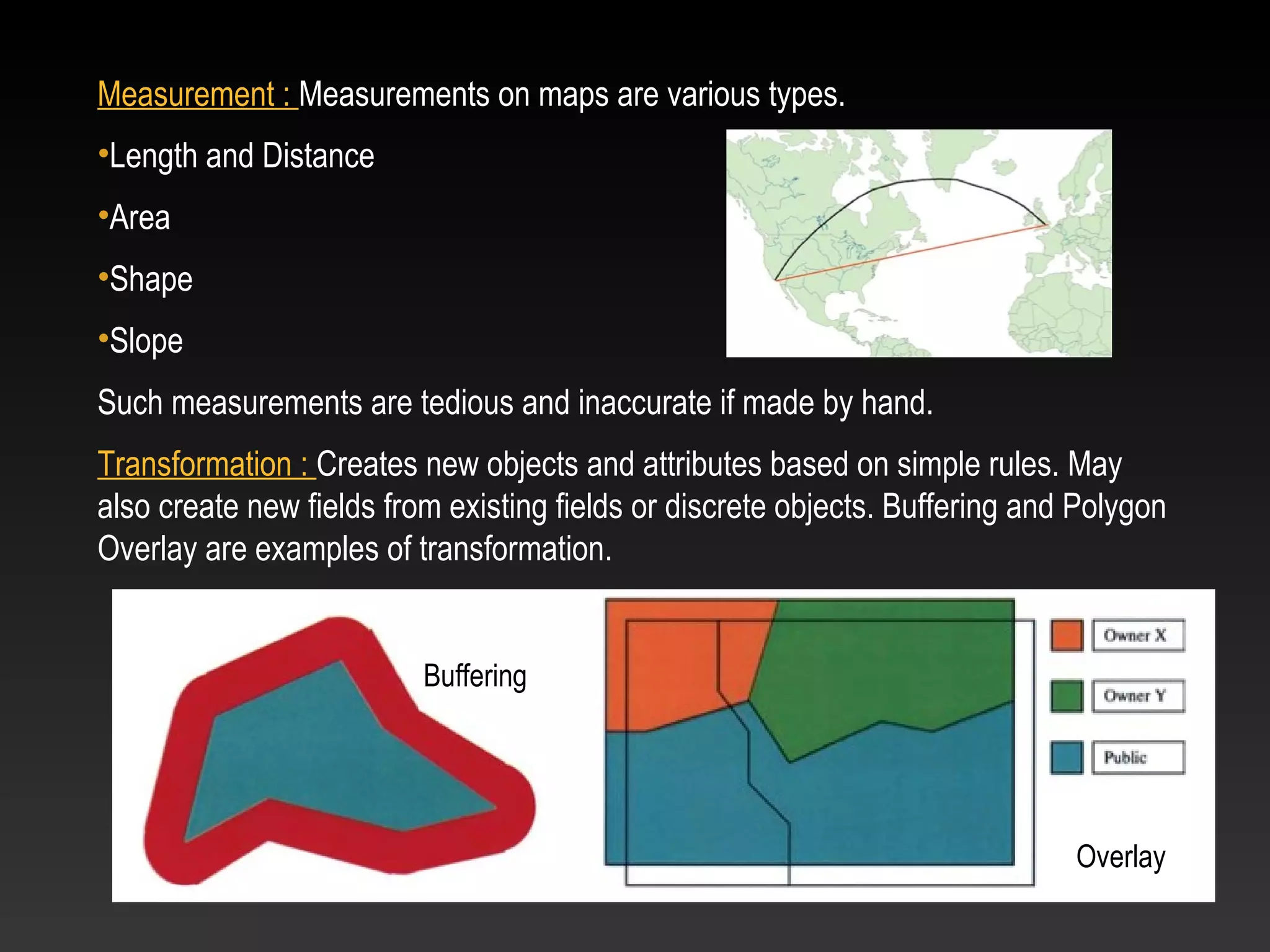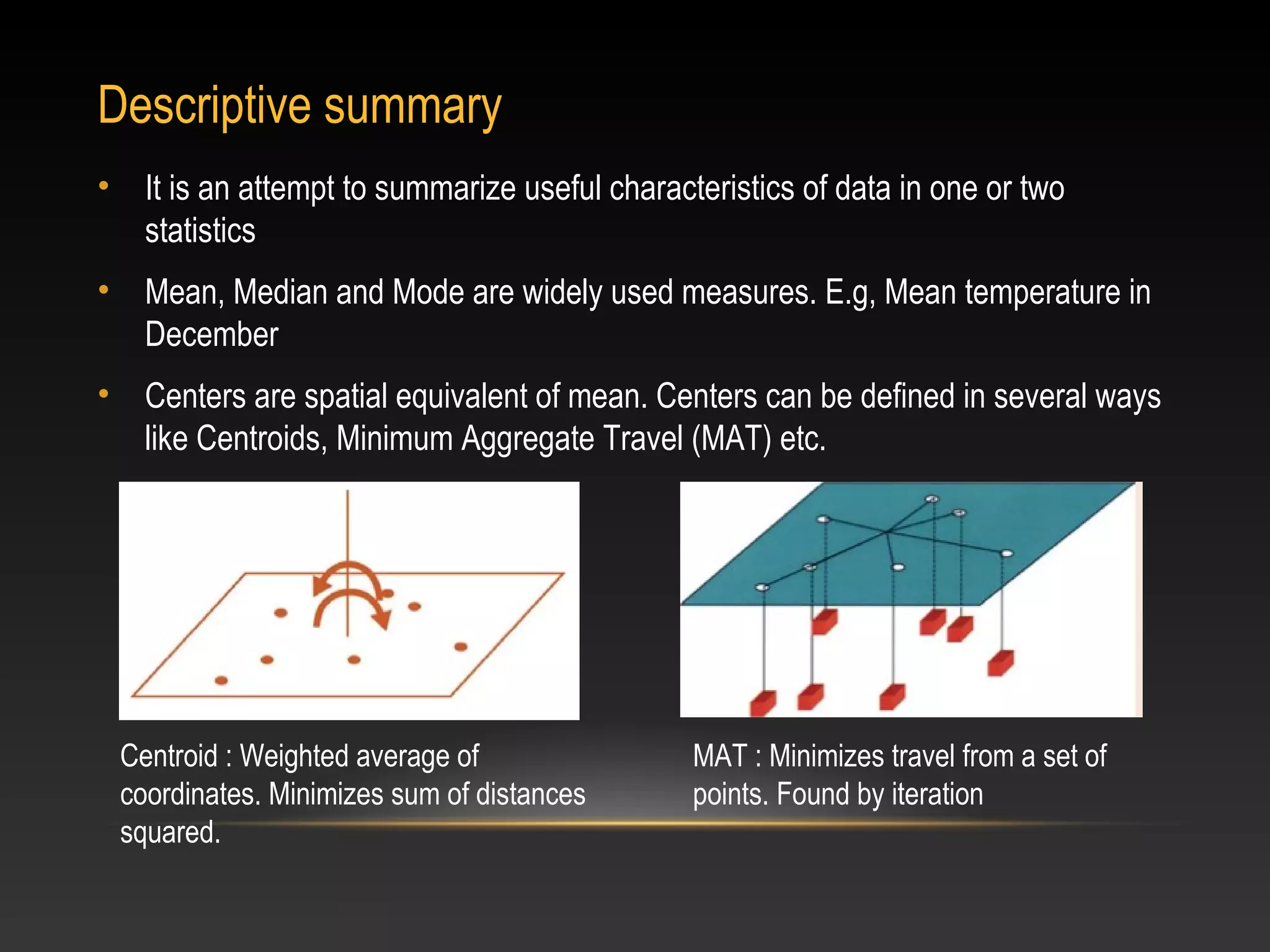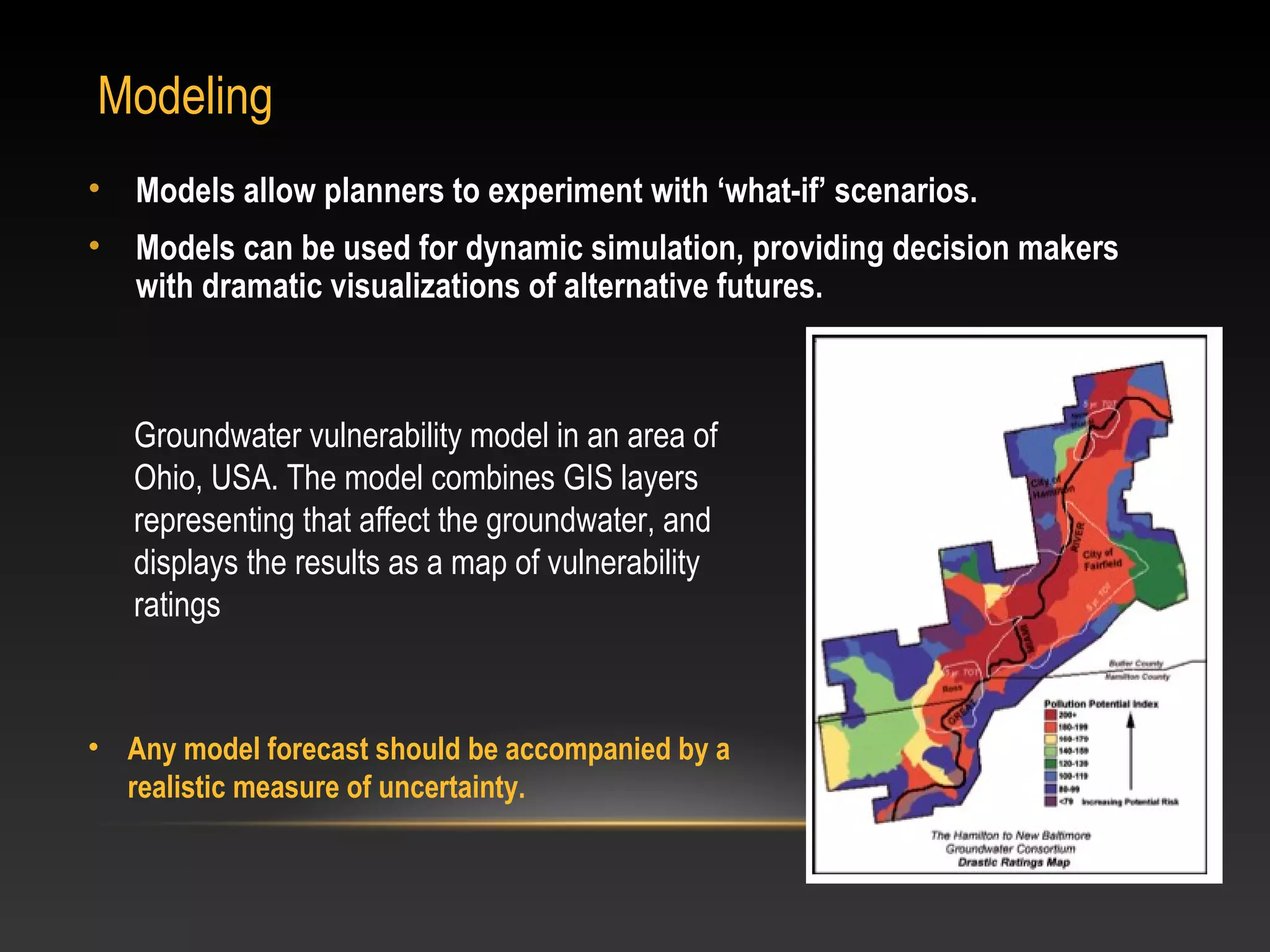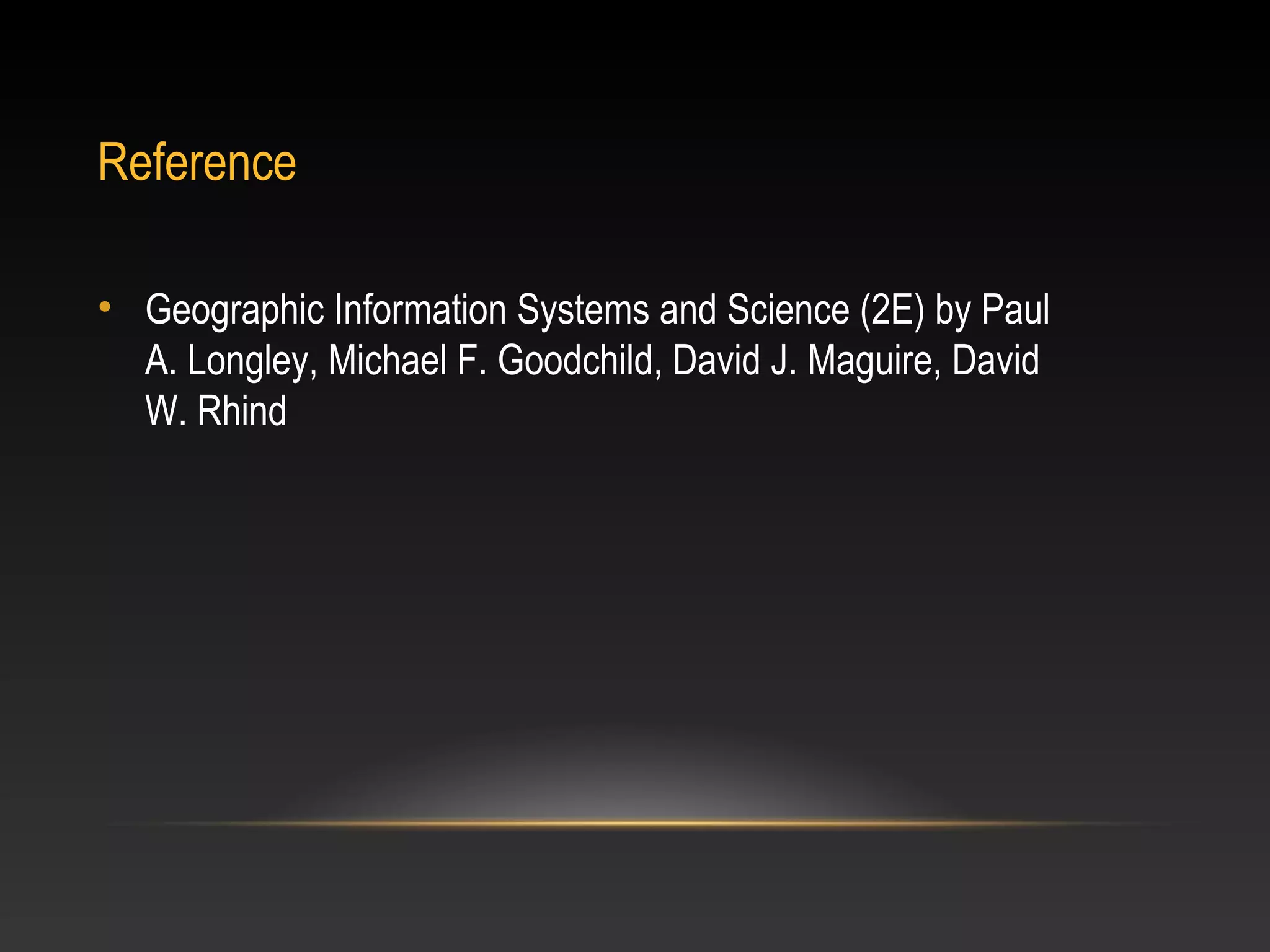This document discusses various types of spatial analysis that can be performed using GIS. It describes how GIS allows for visual representation of data, precise vector analysis, integration of spatial and non-spatial data, and updatable analysis. The document then outlines specific spatial analysis techniques including map production, geovisualization, querying and measurement, descriptive summaries, and modeling. It provides examples for each type of analysis like cartograms for geovisualization and buffering and overlay for transformation.
